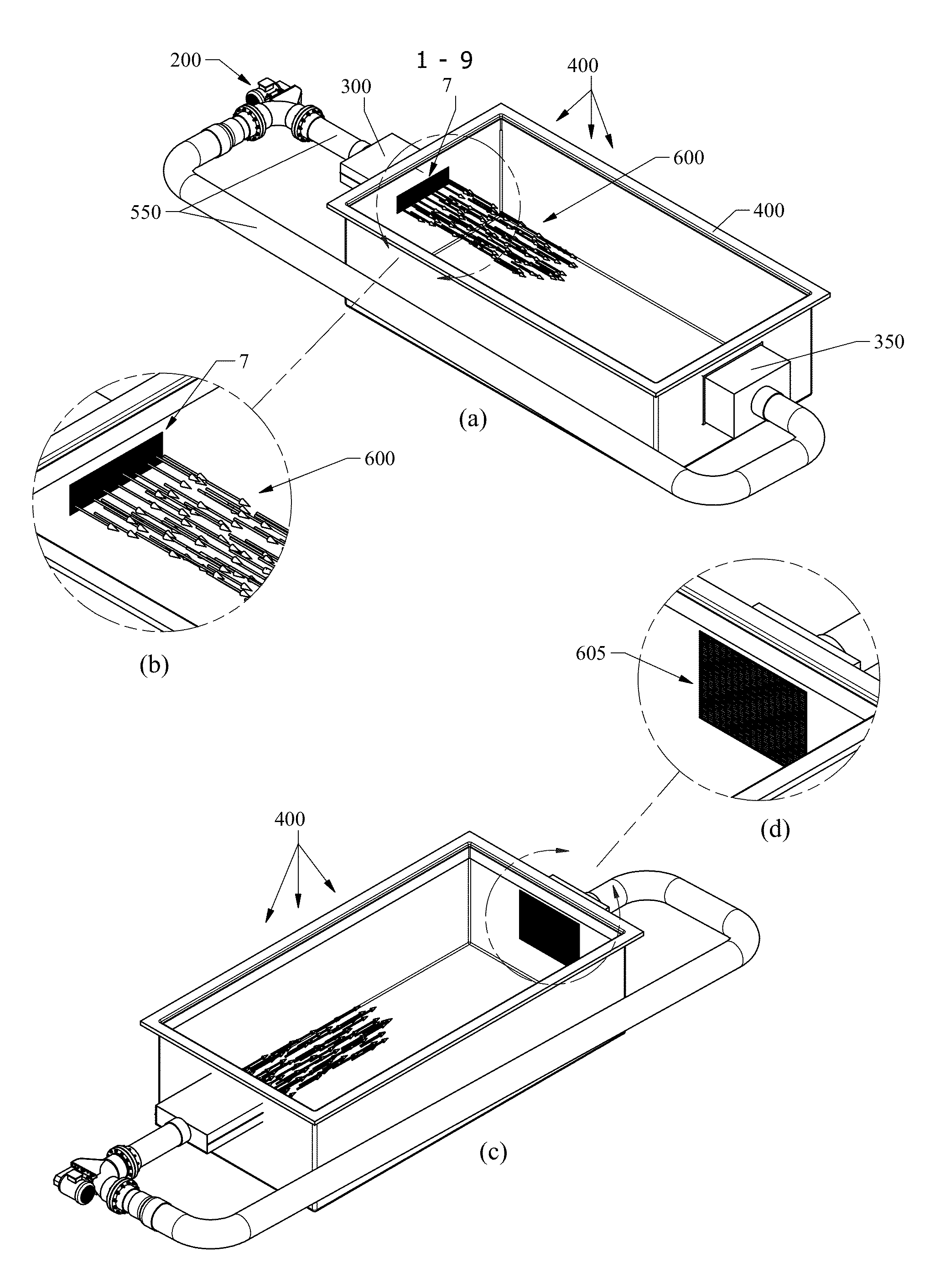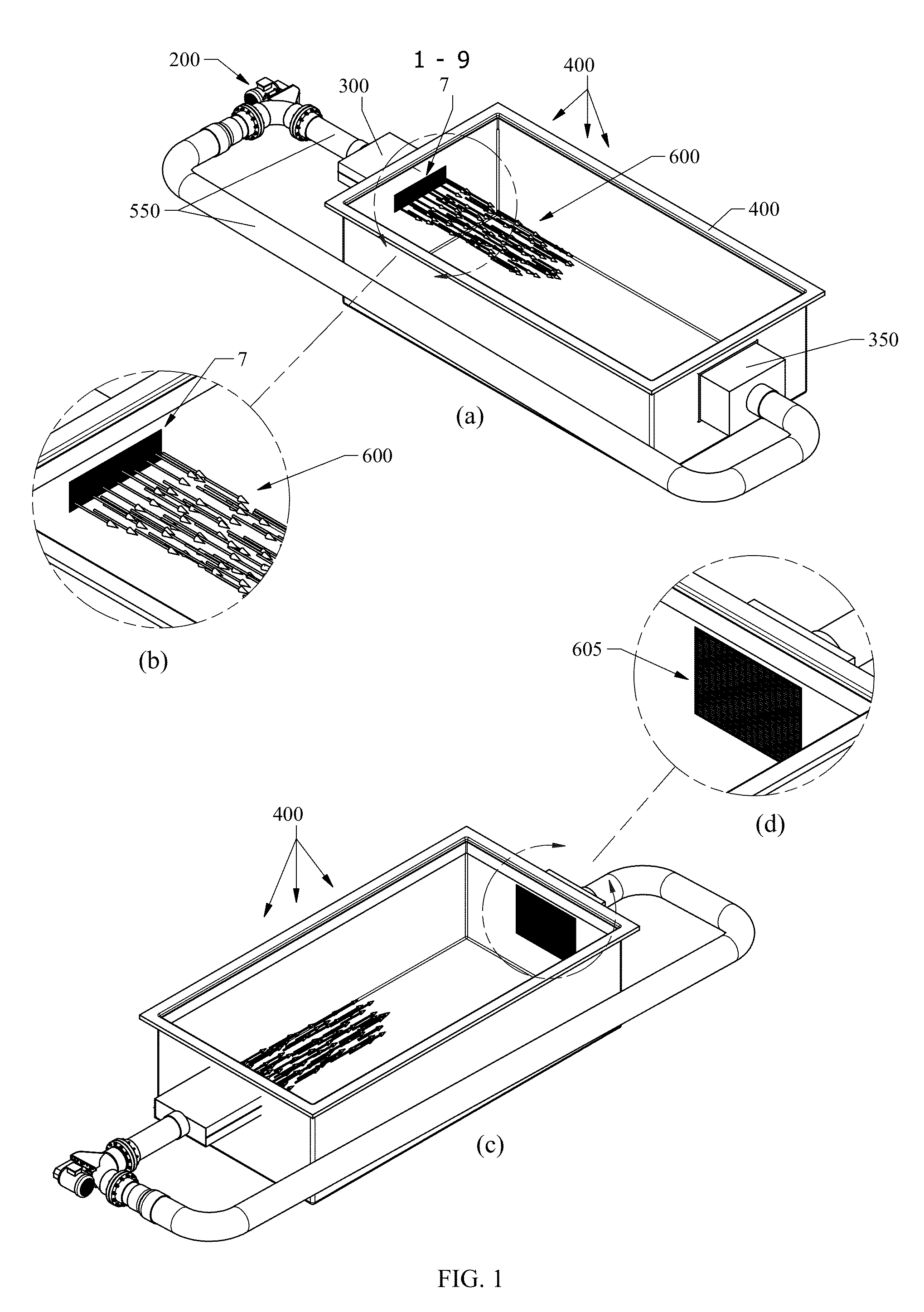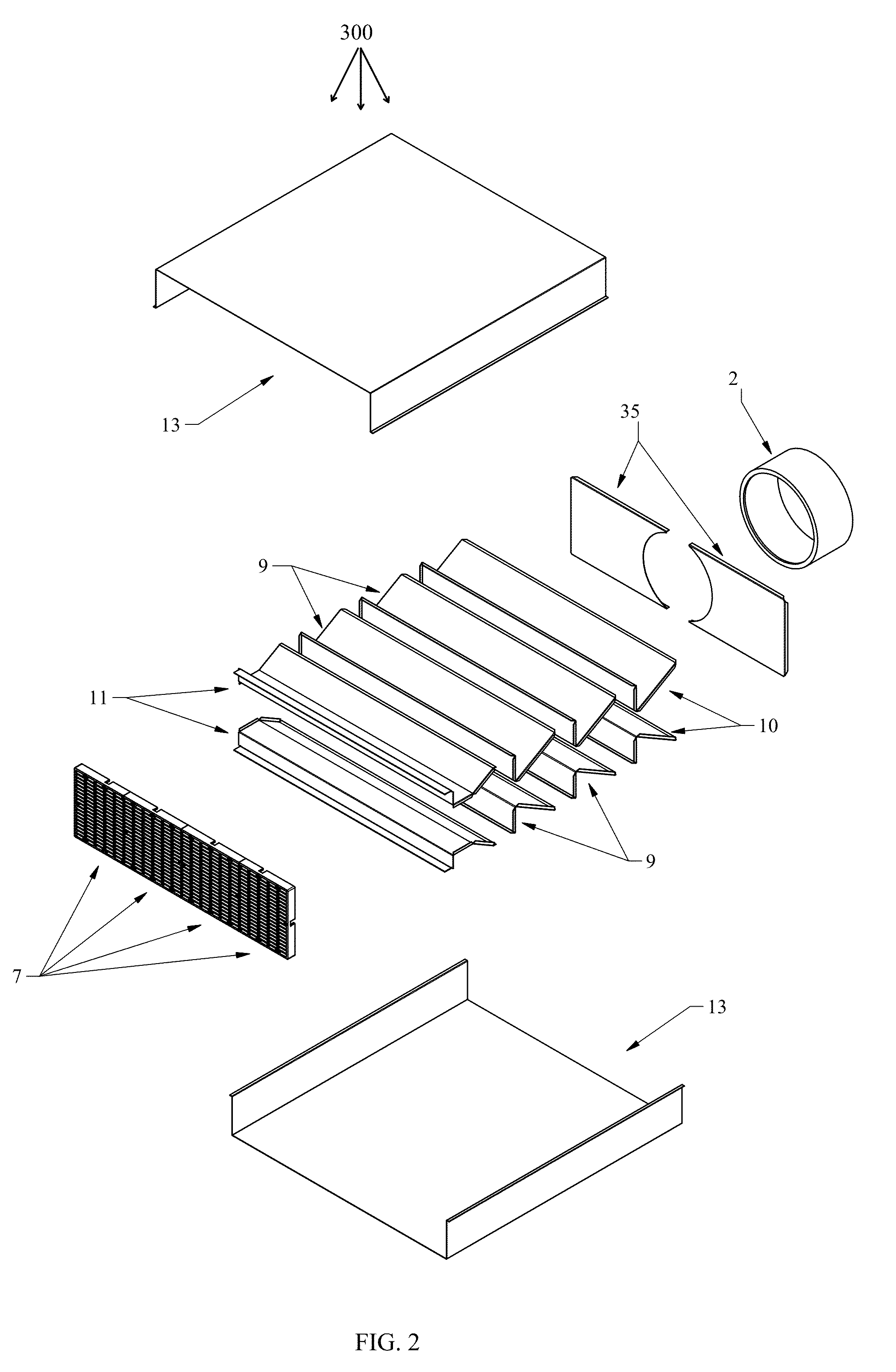Propulsion system
a propulsion system and propeller technology, applied in the field of propulsion systems, can solve the problems of reducing the efficiency of the pump, limiting the water flow of the conventional propulsion system, and the inefficiency of the propeller, so as to achieve the effect of positive water thrust, greater pump efficiencies, and more efficient way of driving water
- Summary
- Abstract
- Description
- Claims
- Application Information
AI Technical Summary
Benefits of technology
Problems solved by technology
Method used
Image
Examples
Embodiment Construction
[0033]Reference will now be made in detail to the present preferred embodiments of the invention, examples of which are illustrated in the accompanying drawings.
[0034]FIGS. 1a-d show various views and details of the propulsion system 100 in a pool wall mount application according to an embodiment of the present invention. A pool 400 is shown with the laminar flow box assembly 300 attached thereto. An outlet grate 7 of the laminar flow box assembly 300 is shown in the inside of the pool 400. FIG. 1a shows arrows depicting laminar water flow 600 coming from the outlet grate 7 of the laminar flow box assembly 300 toward the suction / return box 350. The suction / return grate 605 is secured to the suction / return box 350 (by fasteners, adhesives or mechanical means). The suction / return grate 605 can be a safety grate that is designed to meet or exceed ASME A112.19.8 2008 standard for unblockable main drain covers as per the requirements for the Virginia Graham Baker Pool and Spa Safety Act ...
PUM
 Login to View More
Login to View More Abstract
Description
Claims
Application Information
 Login to View More
Login to View More - R&D
- Intellectual Property
- Life Sciences
- Materials
- Tech Scout
- Unparalleled Data Quality
- Higher Quality Content
- 60% Fewer Hallucinations
Browse by: Latest US Patents, China's latest patents, Technical Efficacy Thesaurus, Application Domain, Technology Topic, Popular Technical Reports.
© 2025 PatSnap. All rights reserved.Legal|Privacy policy|Modern Slavery Act Transparency Statement|Sitemap|About US| Contact US: help@patsnap.com



